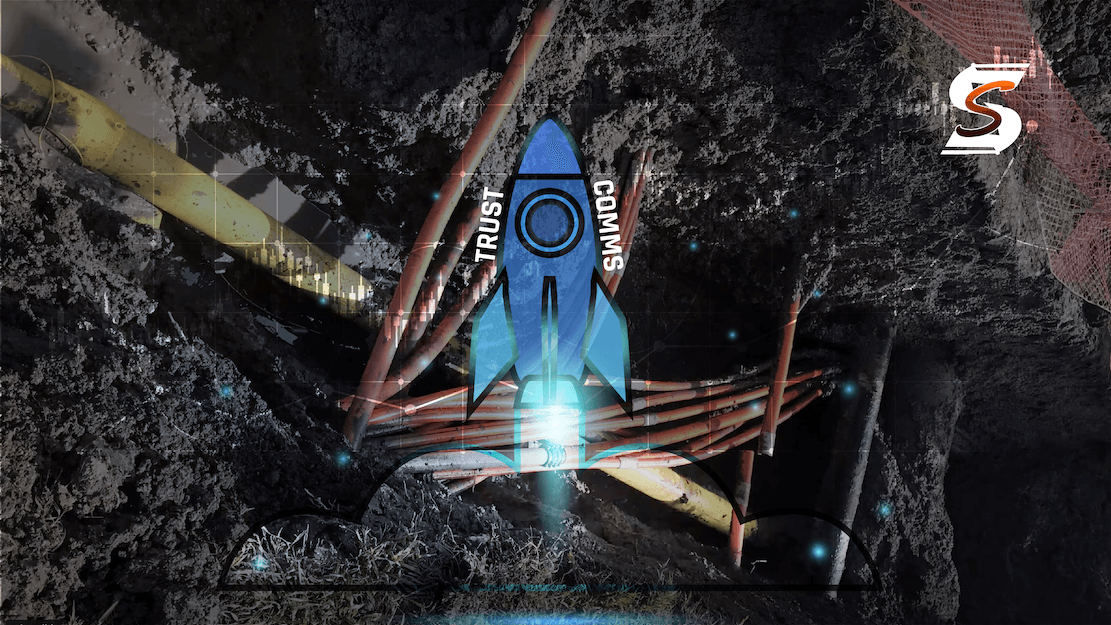
In the past few weeks I’ve met with a number of excavators who keep echoing the same complaint (which I’ve been hearing my entire career in this industry) which is, 'we (excavators) have stopped bringing up issues with utilities because we (excavators) keep hearing the same excuses'. I understand the frustrations from both sides because we have customers that are utilities, locators and excavators, and I also know there are lots of great relationships out there. Here’s an excerpt from an old Underground Focus which illustrates what I’m talking about;
“After reading our May 2010 issue of Underground Focus, we struck a nerve with a Pennsylvania excavator: “...your opening paragraph should state, ‘What are the odds that a utility company is going to show as much diligence in marking a utility correctly as most of us prudent ditch diggers spend looking for all their screw ups?’ Even when you try to backtrack and mention locator error and missing lines on utility maps, you still make a statement that the damage frequency goes down, ‘If the excavator conducts an exhaustive search for unmarked utility lines.’ Are you kidding me? You further state, ‘If the excavator trusts the marks, the damage frequency goes up.’ That’s what damage prevention is all about. We make a call and trust all affected utilities will be marked. Are we going to play a game and call it What’s the Right Mark? Nowhere are there any pictures of the excavator’s crew standing by idly or the foreman trying to explain to his supervisor or owner about what they can do to make up for today’s lost production. Oh, and the news camera is a nice touch. I can see the headlines, Contractor Damages Gas Line, City Block Evacuated. Wow, that’s fair and balanced. Every time I think we’re making progress in damage prevention I read this and know we still have a ways to go.”
I think what this boils down to is a trust issue and a communication issue, both of which are solvable. My colleague Kyle Winters recently shared a video of a mismarked line which could have led to a damage but was thankfully caught by the excavator. Mismarked lines create an atmosphere of mistrust between excavator and locator. And that’s both a communication and trust issue, so let’s tackle it, so here’s my action plan:
1. Establish Regular Communication Channels:
- Implement regular meetings or check-ins between locators and excavators to discuss ongoing projects, challenges, and potential issues. This will develop deeper relations between both parties and eliminate some of the miscommunication
- Utilize digital communication platforms such as email, messaging apps, or project management software to facilitate real-time communication and information sharing. Once there's a paper trail, people are usually more accurate and thorough with what they say.
2. Enhance Transparency:
- Encourage locators to provide detailed and accurate information about utility markings, including any potential discrepancies or areas of concern. (This could be done via a drawing tool where they can mark up maps - Utilocate )
- Promote open dialogue between locators and excavators regarding the accuracy of utility markings and any observed discrepancies in the field.
3. Improve Training and Education:
- Provide comprehensive training programs for both locators and excavators on utility locating best practices, including proper marking procedures, identification of potential hazards, and effective communication protocols.
- Offer joint training sessions or workshops to foster a better understanding of each other's roles and responsibilities in the utility locating process.
4. Implement Quality Assurance Measures:
- Establish quality assurance protocols to ensure the accuracy and reliability of utility markings, including regular site inspections and verification procedures.
- Encourage excavators to report any discrepancies or concerns regarding utility markings promptly, providing a mechanism for addressing issues before they escalate.
5. Foster a Culture of Collaboration:
- Promote a collaborative mindset among locators and excavators, emphasizing the shared goal of preventing utility damages and ensuring job site safety. Check out this article on mindsets
- Encourage the exchange of feedback and suggestions for improvement between locators and excavators, creating opportunities for continuous learning and process refinement.
6. Develop Clear Communication Protocols:
- Define clear communication protocols and procedures for reporting utility marking discrepancies or issues, including designated points of contact and escalation paths.
- Provide excavators with guidelines for communicating their concerns or questions to locators in a constructive and respectful manner, fostering a positive working relationship.
7. Implement Technology Solutions:
- Explore the use of advanced technology solutions, such as GPS-enabled mapping tools or augmented reality systems, to improve the accuracy and efficiency of utility locating processes.
- Invest in digital documentation and record-keeping systems like Utilocate and UExcavate to track utility marking activities, streamline communication, and facilitate data sharing between locators and excavators. (Learn more at utilocate.com and uexcavate.com)
8. Monitor and Evaluate Progress:
- Establish key performance indicators (KPIs) to measure the effectiveness of communication and trust-building initiatives between locators and excavators.
- Conduct regular assessments and feedback sessions to solicit input from both parties and identify areas for improvement or further intervention.
I've written numerous articles about the necessity for enhanced locating practices to drive down damages and increase productivity: utilities must improve their locating methods, and excavators must increase their locating efforts. Without proactive engagement from both parties, the discourse surrounding damage prevention appears stagnant and repetitive. But I think there's a way forward and by implementing these action steps, we can work towards building stronger communication and trust between locators and excavators, ultimately enhancing collaboration, minimizing risks, and promoting safety in the utility locating industry.
Share this Post











